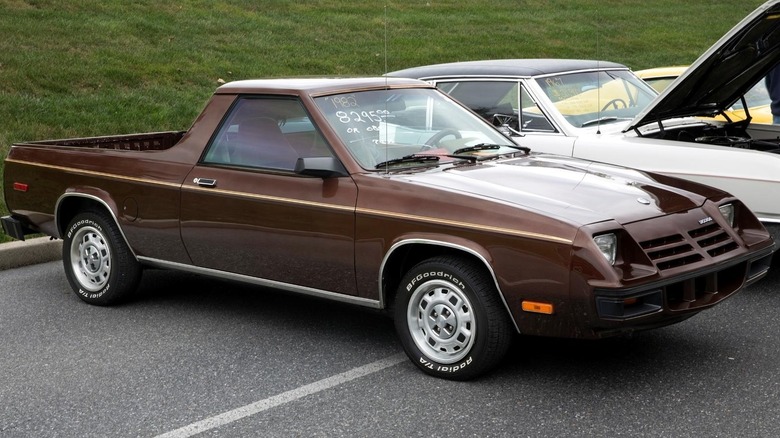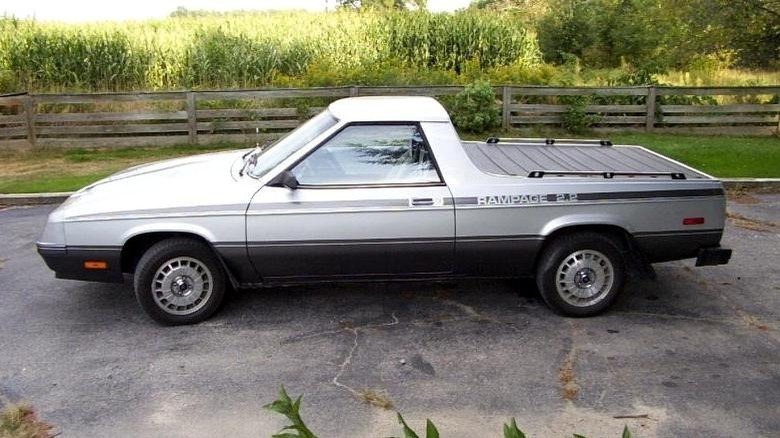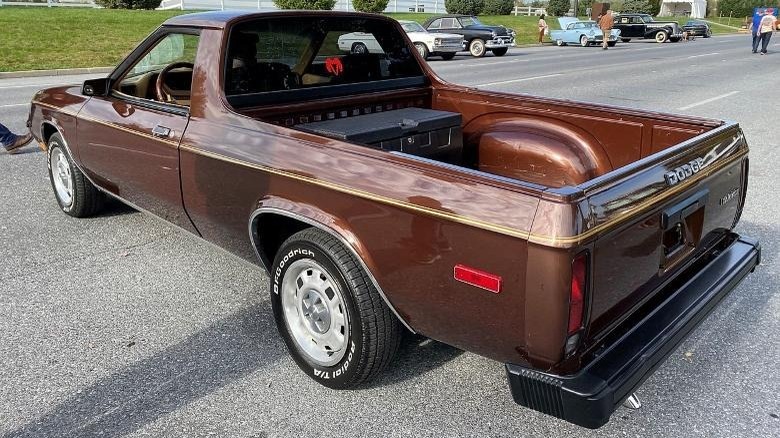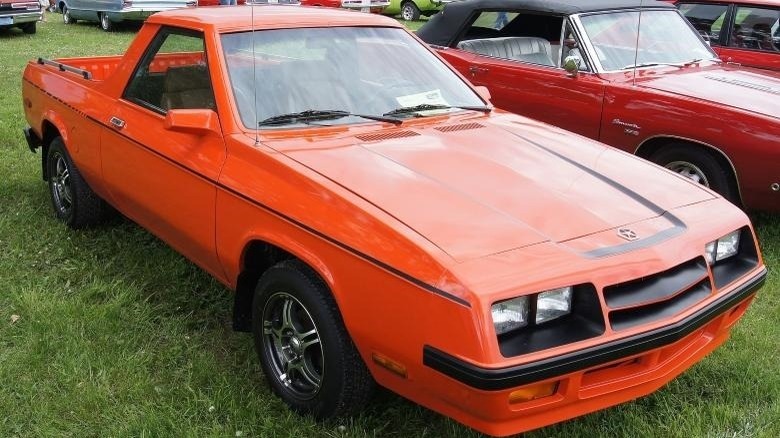Here's Why Dodge Discontinued The Rampage
In the late '70s and early '80s, compact and mini-pickup trucks gained popularity due to the fuel crisis and tightening emissions standards, which had consumers seeking smaller, more efficient vehicles. Dodge, being an ambitious automaker, wanted to capitalize on this market. One of its answers was the Rampage — a car-based truck built on Chrysler's compact L platform. The original Rampage had a 2.2-liter four-cylinder engine that generated 84 horsepower, and could be specified with a four-speed manual, five-speed manual, or three-speed automatic transmission.
If the Rampage is underpowered, it more than makes up for this drawback with impressive fuel economy ratings, offering 21 mpg in the city and 29 mpg on the highway. It also had a respectable 1,145-pound payload capacity, which was only 105 pounds less than the medium-sized Chevrolet El Camino. Despite these impressive attributes, the Rampage's production run was relatively short-lived, as the half-ton truck was only available from 1982 to 1984, before Dodge discontinued it.
[Featured image by Mr.choppers via Wikimedia Commons | Cropped and scaled | CC BY-SA 3.0]
Sluggish sales performance hampered the Dodge Rampage's success
Dodge faced challenges moving the Rampage. Sales peaked in 1982, with the small pickup truck selling 17,636 units. For the 1983 model year, the Detroit-based automaker replaced the Sport trim with the Rampage 2.2 (the other variant being the entry-level High-Line). The new trim introduced a five-speed manual transmission, adjustable bucket seats, and also brought cosmetic changes such as a fake hood scoop and custom 2.2 vinyl exterior graphics. These upgrades still failed to elicit interest in consumers, however, as sales suffered a further decline in 1983, with Dodge only able to sell 8,033 units.
For its final model year, the Rampage received a facelift aimed at making it sportier and more aggressive, thanks in part to a revised grille and front fascia treatment. Despite Dodge's efforts, 1984 Rampage sales only saw a slight increase, reaching 11,732 units that year. In total, 37,401 Dodge Rampages were produced between 1982 and 1984.
[Featured image by E is for Ian via Wikimedia Commons | Cropped and scaled | CC BY-SA 4.0]
Underwhelming sales was not unique to the Dodge Rampage
The Dodge Rampage's dismal sales figures reflect a broader decline in interest for car-based pickups in North America, rather than a failure of the Rampage itself. This trend was well underway by the time Dodge introduced the Rampage in 1982.
The Ford Ranchero, which pioneered the car-based pickup segment, ceased production in 1979 after selling around 25,000 units. Following the Ranchero's demise, even the El Camino, historically one of Chevrolet's star performers, began to struggle, with production dropping from 58,008 units in 1979 to 40,932 in 1980. Sales continued to decline, reaching only 22,732 by 1982. Though there was a slight uptick in 1983 with 24,010 units sold, El Camino sales soon went back down and continued falling until its final model year in 1987, when only 13,743 were sold.
Within Chrysler's own lineup, the Plymouth Scamp appeared as a rebadged Rampage for the 1983 model year, but it fared no better, with sales of only 2,184 Scamp and 1,380 Scamp GT models. Other small utility vehicles, such as the Subaru BRAT, also experienced a significant sales decline during this period, going from a high of 23,441 units in 1979 to just 12 units by 1988. Volkswagen's Rabbit truck followed a similar trajectory, with sales plummeting from 25,532 and 33,879 units in 1980 and 1981, respectively, to a mere 392 units in 1984.
[Featured image by CZmarlin via Wikimedia Commons | Cropped and scaled | CC BY-SA 4.0]
Evolving consumer demand accelerated the demise of the car-based pickup
By the time the Dodge Rampage's production was set to end in 1984, the car-based pickup segment had clearly fallen out of favor, due to a combination of shifting consumer preferences and evolving market conditions.
One key factor was the decrease in gasoline prices. After rising from $0.59 in 1974 to $1.31 in 1981, fuel costs began to fall, dropping to $1.22 in 1982 and as low as $0.86 by 1986. As gas became more affordable, consumers were less inclined to opt for the smaller, more fuel-efficient car-based pickups. Instead, they gravitated towards larger, more capable truck models like the Ford F-series, which had already become the best-selling truck in the U.S. for the third consecutive year by 1984.
As this demand for the likes of the F-series increased, the appeal of the Rampage and similar car-based alternatives waned, contributing to the decline of the segment.
[Featured image by Greg Gjerdingen via Wikimedia Commons | Cropped and scaled | CC BY 2.0]



